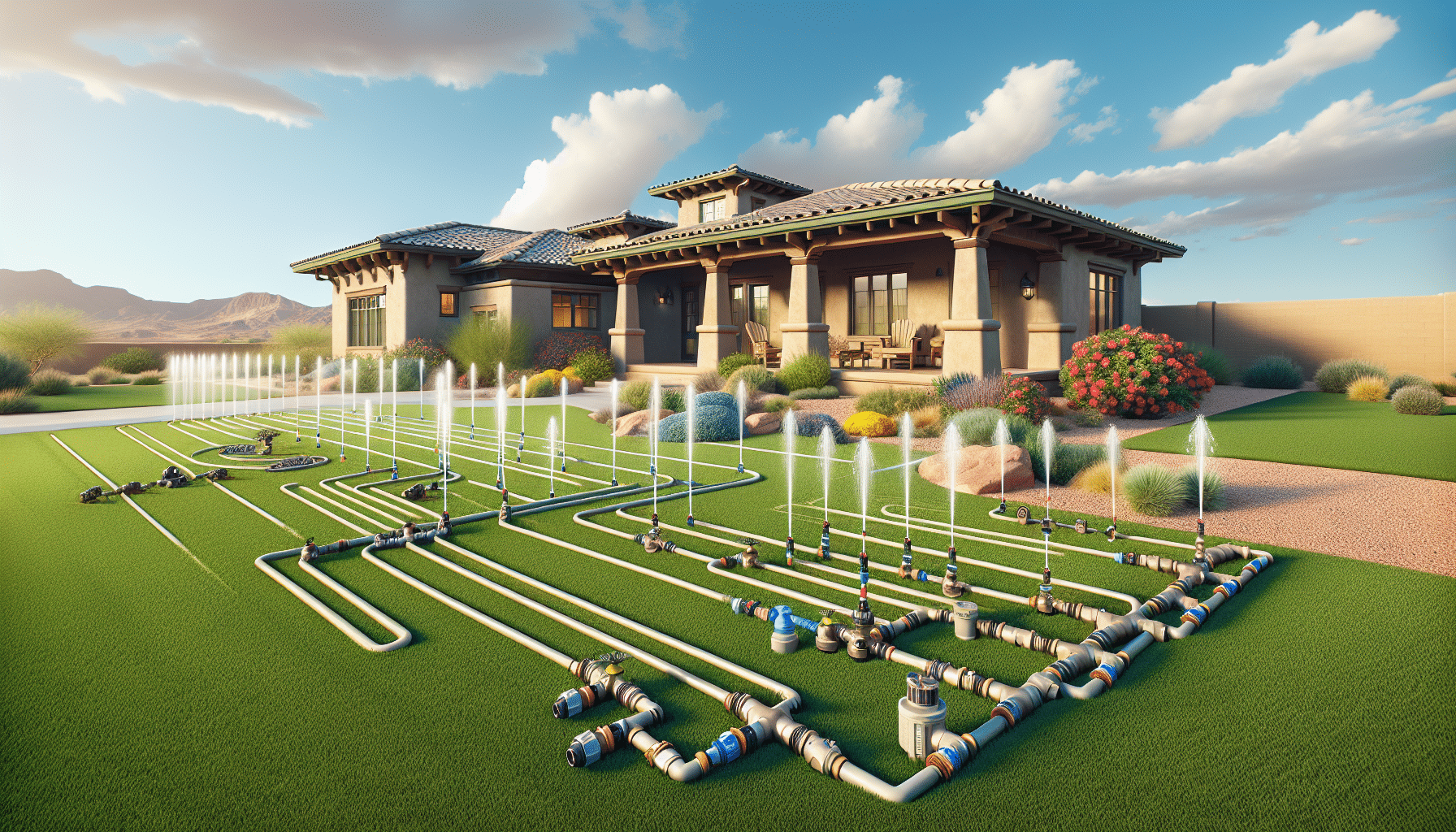Struggling with watering your garden efficiently in the blazing Arizona heat? You’re not alone, and that’s why we’re diving into the ins and outs of drip Irrigation Systems. This guide is perfect for homeowners eager to optimize their yard, conserve water, and ensure a thriving landscape.
Contents
- 1 Understanding Drip Irrigation
- 2 Benefits of Drip Irrigation
- 3 Components of a Drip Irrigation System
- 4 Choosing the Right System for Your Garden
- 5 Installation Process Simplified
- 6 Maintaining Your Drip Irrigation System
- 7 Common Issues and Troubleshooting
- 8 Cost Considerations
- 9 Environmental Impact
- 10 Key Features of Drip Irrigation Systems
- 11 Conclusion
Understanding Drip Irrigation
Drip irrigation is a highly efficient watering method that delivers water directly to a plant’s roots. By using a system of tubes, pipes, and emitters, it provides consistent moisture directly where it’s needed, minimizing waste.
This method is ideal for arid regions like ours because it significantly reduces water evaporation. As a result, plants receive nutrients in a more efficient manner, promoting healthier growth without water waste.
Benefits of Drip Irrigation
By choosing drip irrigation, homeowners can enjoy several benefits, starting with reduced water usage. This system uses up to 50% less water compared to conventional methods, making it both eco-friendly and cost-effective.
Additionally, it helps in minimizing weed growth since water is delivered directly to the plants and not the surrounding soil. This targeted watering helps maintain a neat and tidy garden while keeping maintenance efforts to a minimum.
Components of a Drip Irrigation System
Every drip irrigation system comprises several essential components, each playing a critical role in ensuring efficient water delivery. Understanding these components is crucial for setting up and maintaining an effective system.
Typically, the main elements include a water source, filter, pressure regulator, tubing, and emitters. Together, they work in harmony to ensure that water reaches the roots without any obstructions or inefficiencies.
Choosing the Right System for Your Garden
Selecting the appropriate drip irrigation setup largely depends on the specific needs of your garden. Consider factors such as the types of plants, soil condition, and overall Landscape Design.
Moreover, understanding your garden’s water requirements will ensure that you’re choosing a system that meets your unique needs. This will lead to a lusher garden with minimal water waste.
Installation Process Simplified
Installing a drip irrigation system might seem complicated, but with a little guidance, it becomes manageable. Begin by planning your layout, ensuring that it covers all the areas you wish to irrigate.
Once the layout is set, install the mainline tubing, followed by connecting the emitters. Regular checks and adjustments will help maintain optimal operation, ensuring your plants receive the right amount of water consistently.
Maintaining Your Drip Irrigation System
For a drip irrigation system to function effectively over time, routine maintenance is crucial. Regular checks will prevent clogging, which can hinder the system’s performance.
Also, it is essential to inspect all components periodically to ensure there are no leaks or damaged parts. A well-maintained system guarantees consistent water delivery, promoting plant health.
Common Issues and Troubleshooting
While drip irrigation systems are efficient, they can occasionally run into problems. Common issues include clogged emitters and uneven water distribution.
Identifying and promptly addressing these issues is vital. Regularly flushing the system and keeping components clean can help prevent these common challenges.
Cost Considerations
Investing in a drip irrigation system involves initial setup costs, but it can lead to significant savings in the long run. By reducing your water bill and enhancing plant health, the system pays for itself over time.
It’s crucial to weigh these long-term benefits against the initial investment. This will guide you in making the best financial decision for your landscape irrigation needs.
Environmental Impact
Drip irrigation systems play a significant role in conserving water, especially in arid climates like ours. By reducing water waste, they contribute to sustainable gardening practices.
Moreover, they help preserve local ecosystems by maintaining groundwater levels. This eco-friendly approach ensures that our landscapes remain beautiful while contributing positively to the environment.
Key Features of Drip Irrigation Systems
- Efficiency: Drip systems deliver water directly to the roots, ensuring minimal waste.
- Customization: These systems can be customized to fit any garden size or shape, offering flexibility.
- Convenience: Automated systems reduce manual watering efforts, saving time.
- Scalability: It’s easy to expand the system as your garden grows or changes.
- Durability: High-quality materials ensure that your system lasts, even in harsh weather conditions.
Conclusion
By optimizing water use and enhancing plant growth, drip irrigation systems are a wise investment for any homeowner. Feel free to Contact Us at 480-373-9312 or Request a Free Quote to explore how we can help transform your landscape.




